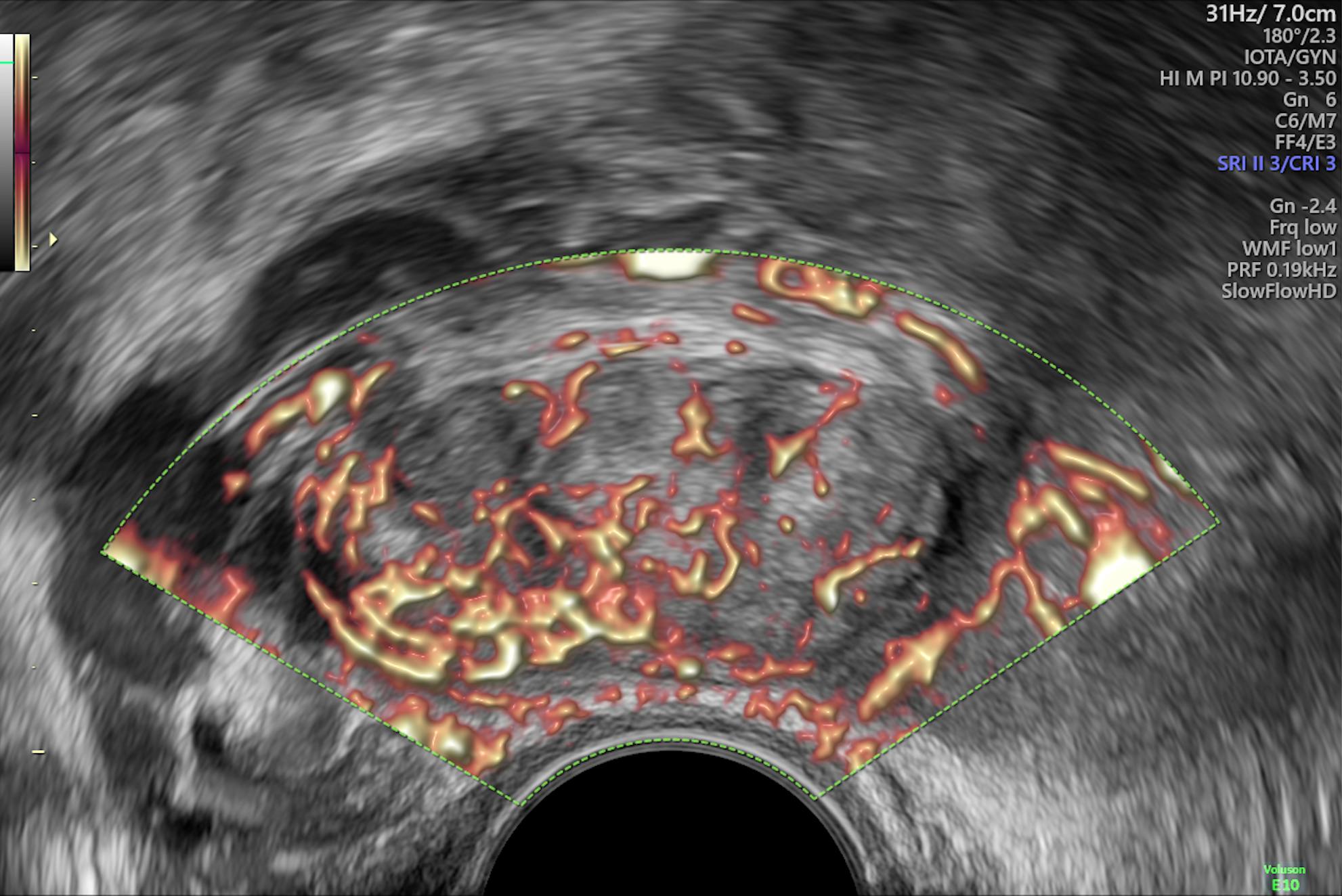What is ultrasound used for? Ultrasound has many applications for women's health, far beyond just obstetrics. Read our collection of frequently asked questions below to learn more about some of the uses for ultrasound in your gynecology practice.
- What is the benefit of 3D ultrasound for a gynecology practice? In many cases, a 3D ultrasound can help improve a doctor's ability to accurately diagnose a gynecological concern. 3D ultrasounds make it easier to identify uterine adhesions, examine IUD placement, locate fibroids and polyps, and more.
- How do you diagnose a misplaced IUD using ultrasound? 3D ultrasounds offer a view of the coronal plane of a transvaginal scan, which isn't something you can do with a 2D ultrasound. This allows physicians to see the entire shape of the IUD as well as how it's positioned in the uterus.
- How can you use ultrasound for postmenopausal gynecology? 3D ultrasound, in particular, can help to diagnose post-menopausal bleeding and uterine adhesions, as it gives a fuller view of the uterus.
- Can you detect endometriosis with ultrasound? Though laparoscopy is the gold standard when it comes to endometriosis detection, 3D ultrasounds can reveal important information before the surgery, especially when it comes to a rarer form of the disease, known as deep infiltrating endometriosis. Rather than having to be sent for an MRI, which also comes at an extra cost, it can be more comfortable for patients to have a 3D ultrasound scan to detect endometriosis.
- How can ultrasound lead to a quicker diagnosis? Often in the past, getting a diagnostic test meant having to get a referral and set a separate time in a separate facility. Using point-of-care ultrasound exams means cutting out all of that extra time and effort on that patient's part and instead being able to perform an ultrasound exam right away. Especially in resource-poor areas, technology like this can be life-saving.
- How do you use ultrasound to evaluate an ovarian mass? Transvaginal ultrasounds combined with a pelvic exam can provide more information about the size, shape, density, and changes in ovarian masses than a regular abdominal ultrasound.
- How do you use a pelvic ultrasound for gynecology check-ups? Using both transvaginal and 3D ultrasound as a part of the annual check-up can help to more accurately diagnose and examine all pelvic areas, from the uterus to the cervix.
- How do you diagnose chronic pelvic pain? A level 2 ultrasound exam can help to identify the cause of chronic pelvic pain, which is often caused by endometriosis. Though this requires more training and preparation, this four-step procedure can help diagnose the pain more quickly and allow the patient to receive the necessary treatment.
- How do you diagnose endometrial cancer? Using 3D ultrasound is a good first step in the diagnostic process for endometrial cancer. Though there's no one-step process for diagnosing this cancer, early detection is key, and ultrasound can help spot the early symptoms of cancer.
- How do you diagnose adenomyosis with ultrasound? Though it isn't cancer, the symptoms of adenomyosis can negatively affect women's lives. Ultrasound can be used to make an accurate diagnosis more quickly so the disorder can be treated.
What is ultrasound used for? All of the above, and more. To keep exploring the many uses for ultrasound, browse the rest of our technology and innovation articles on Empowered Women's Health.




